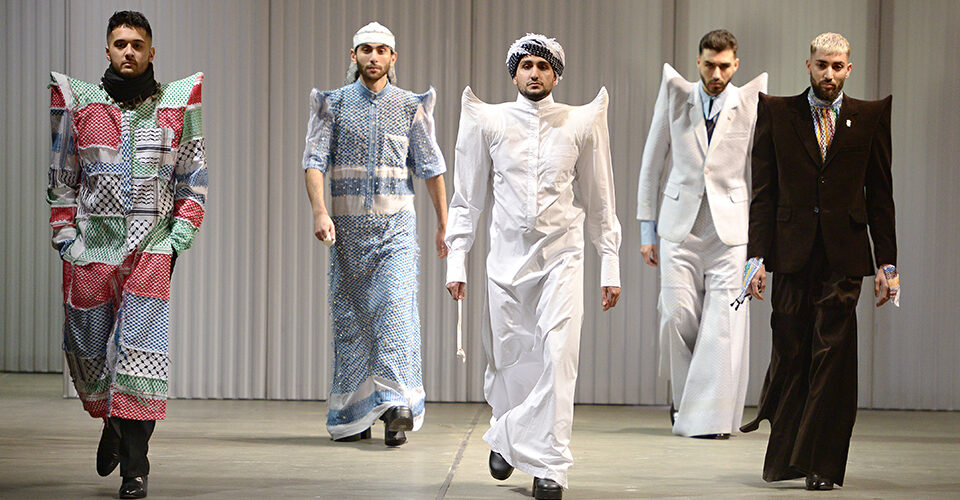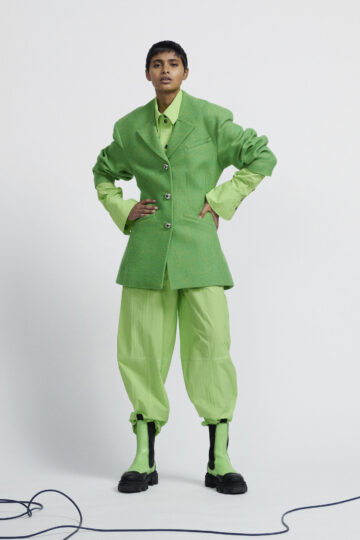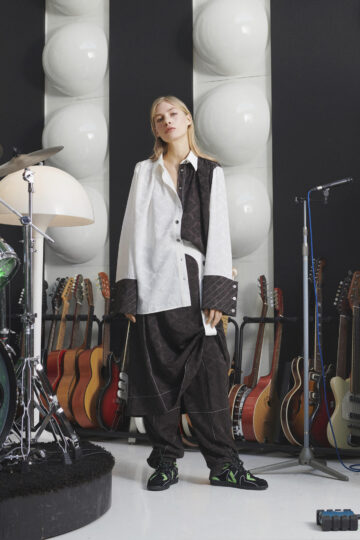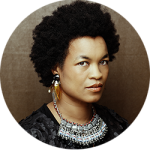I think I expect too much of fashion. I’m trying to stay positive, but I can’t shake the feeling that the “Goon Squad” has come and gone, and now it’s about saving the planet. But, in the spirit of positivity, because…you know…reality check…people have jobs and families to support, I keep hoping that there is still… (to quote Bob via Jimi) “a way out of here, said the joker to the priest.”
I wondered aloud to my empty room… What would it mean to limit fashion week to just once a year?
I’ve bought, like, two pieces of clothing in the last year. The money I saved I’ve invested in stocks instead. No…not GameStop. I’ve been looking into innovation. I read an article on our sister site bellaplume.com, which led me to Mycoworks, and down the mushroom rabbit hole…like growing mushrooms to make biodegradable textiles such as a leather alternative. So, this was my mindset when approaching this season’s fashion week, expecting to see thinking like that.
COPENHAGEN FASHION WEEK AW21 wrapped up its three-day all-digital run yesterday. The continuing theme is sustainability. I didn’t see much innovation on that front, but I saw survival. And different attempts at trying to swim in new waters. When I hear about the collections’ design processes, I realize some people accept that there will be a new normal.
HOUSE OF DAGMAR has gotten off to a good start in tackling environmental issues head-on. They’re re-looking at the carbon emissions from their textiles and sought inspiration in interior design’s longevity. You can see their sustainability goals in the limited, tightly edited collection presented via augmented reality. They’re reading the room. They ended up winning the sustainability award.
Others are sticking to their happy places and finding ways to navigate lockdown, social distancing, and their mental effects. STINE GOYA’s film captures the energy of where we are mentally. Realness for real women. Ease of wear. Freedom of movement. Beautiful colours and patterns. Clothes that you can feel comfortable and beautiful in but hopefully can stand up to wear. Every brand says they’re using sustainable materials, but they don’t actually tell you what. In her design process, Goya visually breaks out of the Scandinavian tendency to the binary while still firmly rooted in the practicality we’ve come to expect from Scandi-fashion. Last season, she made me rethink lilac boots. This season, the energy of the metallic acid green boots is calling me.
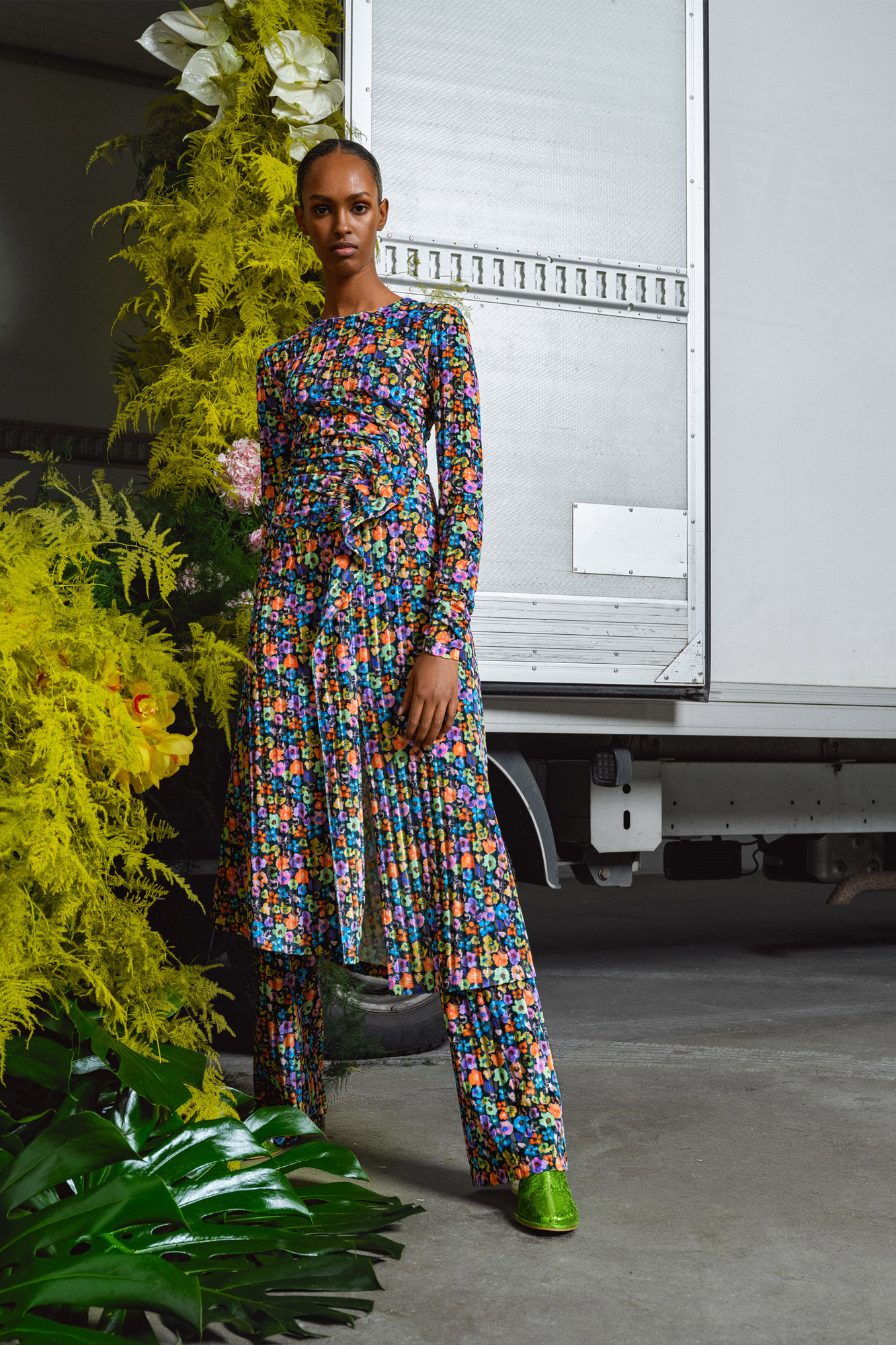
I was also delighted to see the artist ZSELA, whose EP came out last year, at the GANNI version of Tiny Desk Concert. I’m biased because I’ve known her since she was about three feet tall. I’m carbon dating myself, but, Aunties Rule!
ZSELA, DEB NEVER, and COCO O.’s private concert encapsulated and redoubled the global cool chicks #gannigirls vibe, which is the brand’s staple.
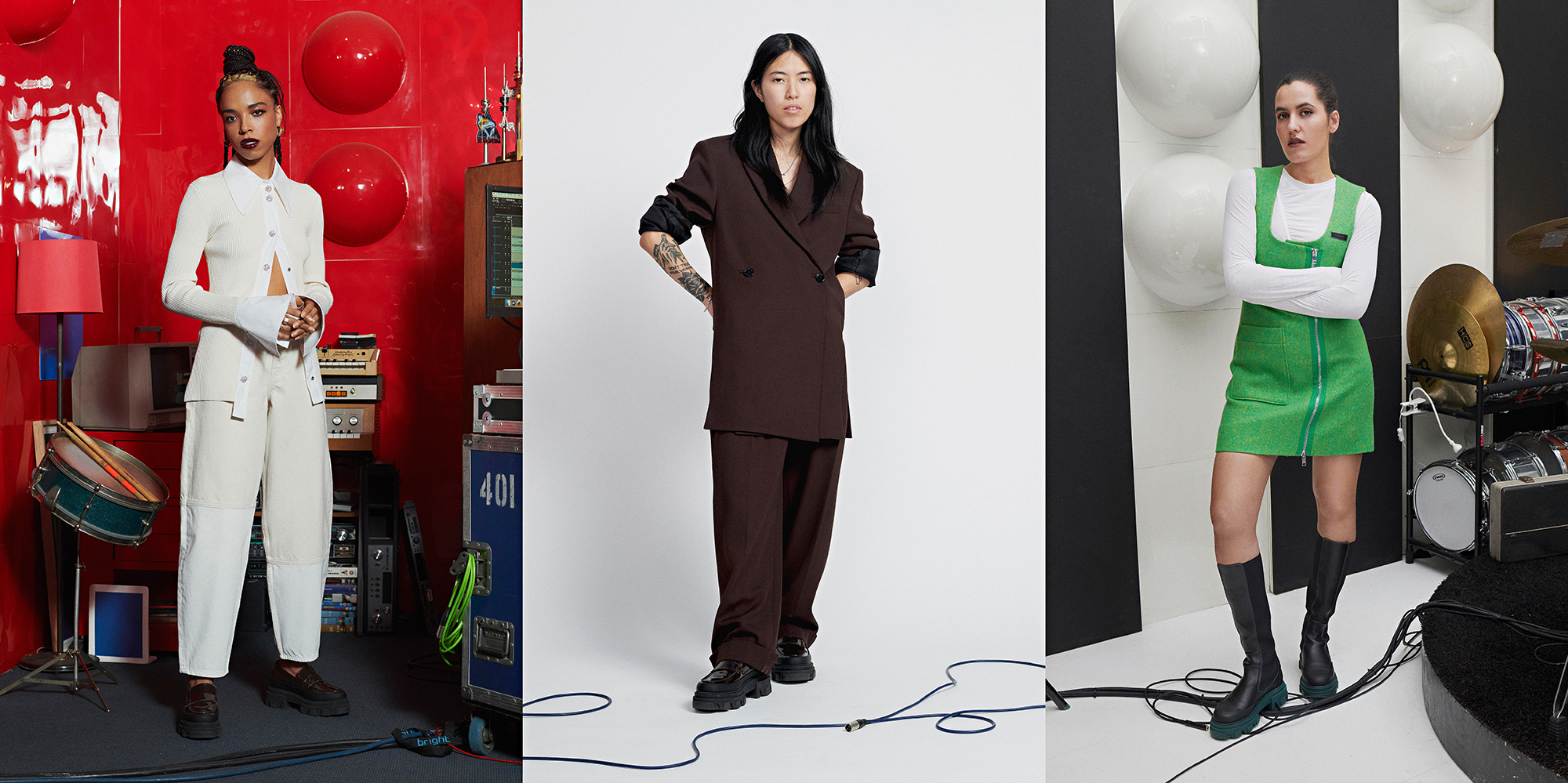
Photos Lana Ohrimenko
A few brands are still holding on to the old way, just waiting “to go back to normal.” Distracting us in the meantime with flash and smokes and mirrors. Normal, of course, was never really good for everybody. To paraphrase the Finnish designer ERWIN LATIMER, “The system of fashion is old while requiring new thinking in design.”
My favorite part of CPHFW21 is still the conversations in the Small Talk, Big Conversations module. Once again, all the people of color with something to say are in the activist box.
Some of the answers to the future of fashion lie in the justice work being done by people like writer CÉLINE SEMAAN. Her SLOW FACTORY FOUNDATION is calling out the system of inequity; the cultural erasure; the question of who has value; and the division between the global North and the global South that is the imprint of the industry.
Please spend some hours deep-diving into Slow Factory Foundation’s website. They give real-world ideas and answers to questions of sustainability. It is educational, uplifting, and the right amount of shame and hope necessary for real change. However, getting there requires the industry and every brand at Copenhagen Fashion Week to get uncomfortable. To admit to the unjust system on which the whole industry’s business model is built. And to work to fix it.
Brands are also trying to find their feet in the new digital medium. Some send mixed signals. SAMSOE SAMSOE is a favourite brand of this magazine. If you scroll through our earlier stories, you will see many an example. So, we especially looked forward to their presentation. Their film “Stillness” opened with describing stillness as: “The absence of movement or sound. The art of finding inner peace. The quality or state of being still.”
It then immediately jumped to models speed-walking through an empty pine forest and an airport devoid of people, with an ominous camera chasing after them. Sitting at my desk, I literally felt my heart racing like I was in a cardio session. The effect was so jarring, I forgot to look at the clothes. If the idea was to break us out of our stillness, then they succeeded. If it was to encourage us to appreciate the quiet and enforced reflection due to the pandemic, then they failed miserably.
And speaking of which, can we move on from “resting-bitch-face” as the default for models. Did I misread the current room? I find spending three days looking at beautiful, robot people (whose own personalities are entirely suppressed) to be not only dispiriting but wholly tiring. Dear designers…models are people too! Luckily the playfulness of the BAUM UND PFERDGARTEN’s take on the Don’t Rush challenge with a hand-off campaign via influencers came just in time.
Ok…disclaimer…this might be one of the drawbacks of digital fashion week. The format might overshadow the brand’s intentions. The democratization and the ability to look more closely put another type of pressure on designers, which might be unfair. We have more time to dissect things, and the medium is definitely the message. It allows us to overthink, and fashion can’t stand up to scrutiny. We see Oz behind the curtains.
So, I’ve lowered my expectations, for now, and started doing my bit. Fashion is already environmentally unsound. We only have like ten years before it becomes untenable.
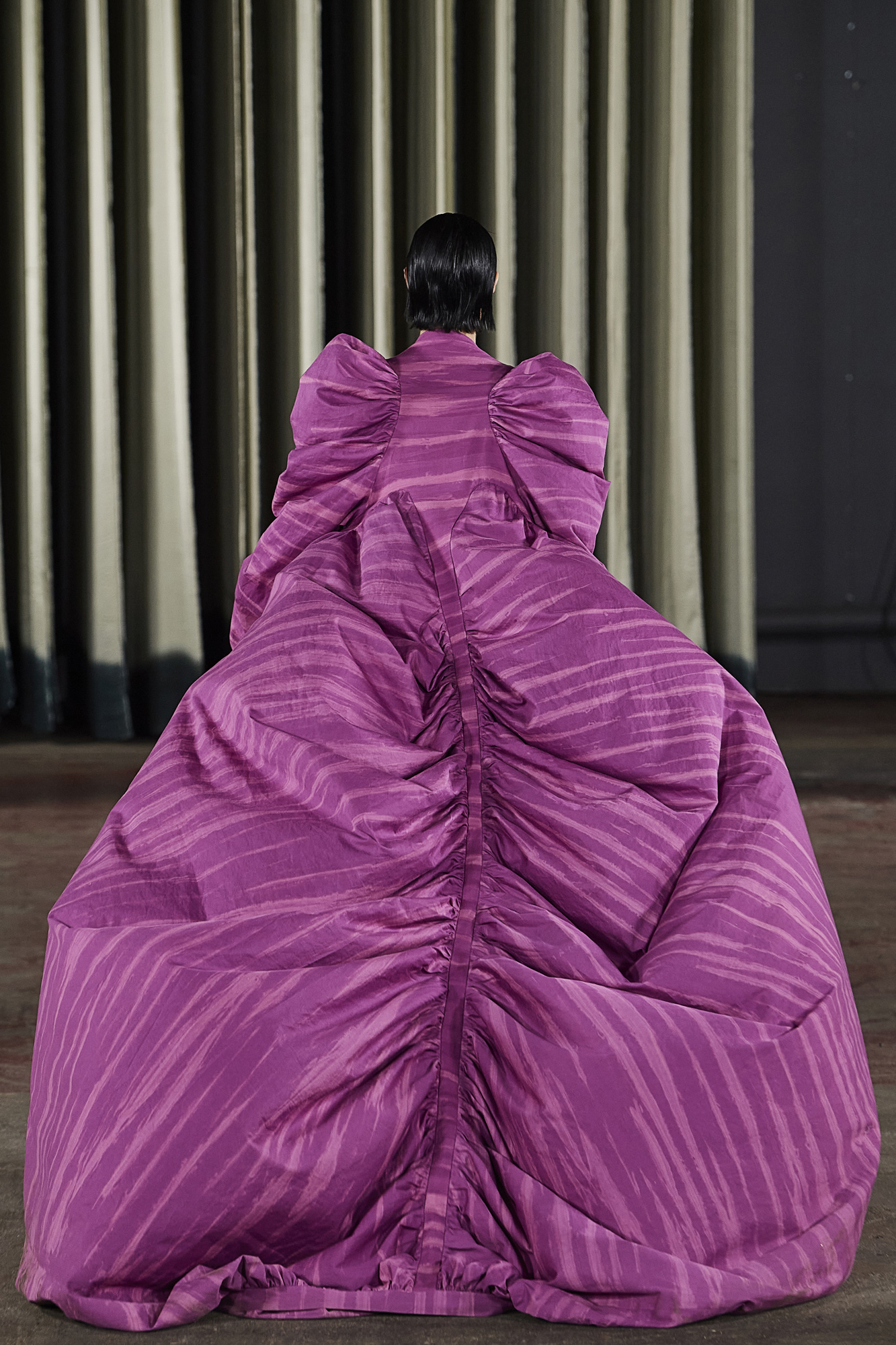
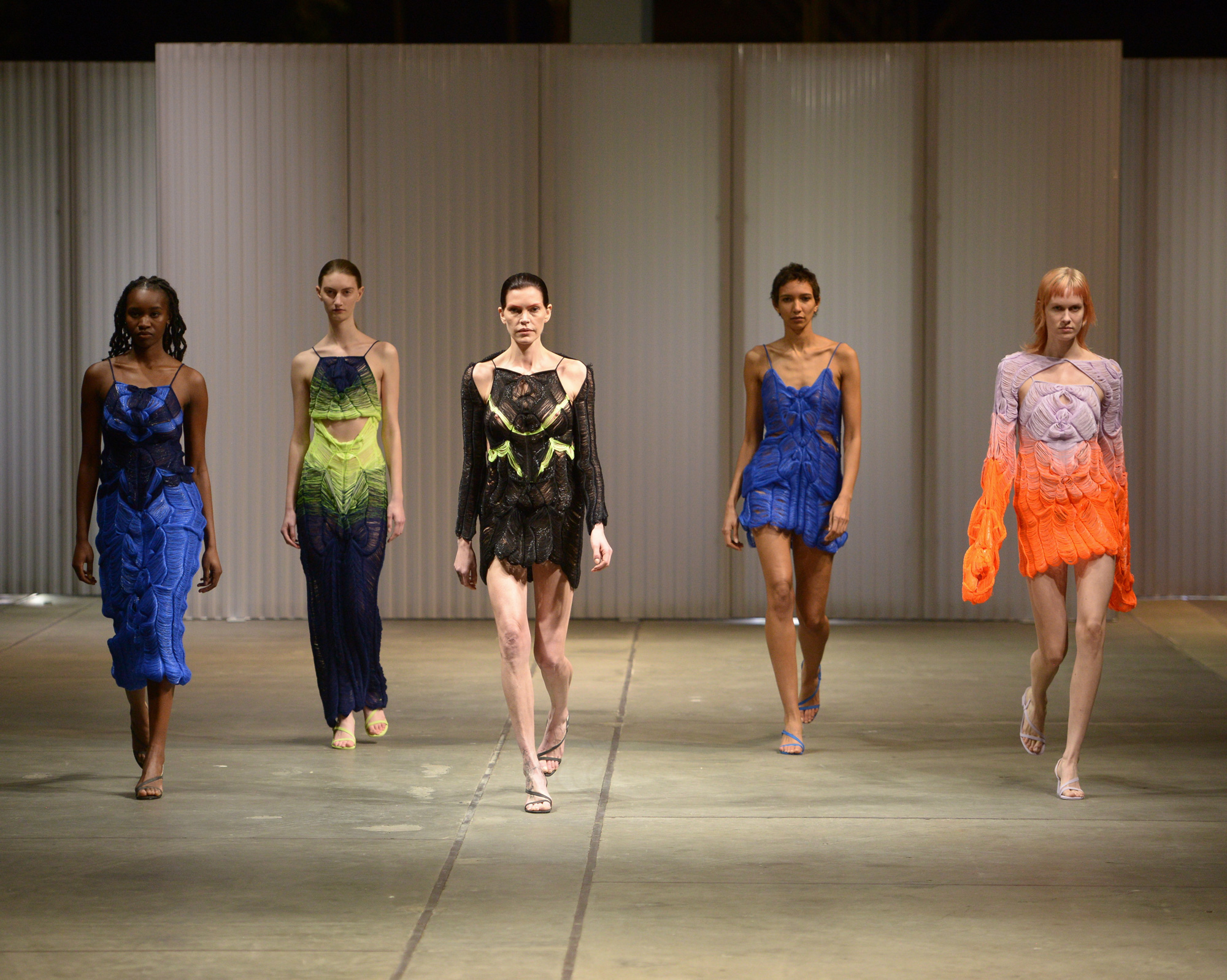
While waiting for the transformation and trying to stay positive with the task at hand, I noticed some of the trends. The historical trend of “when times get hard, clothes get bigger” persists. Extra fabric and oversized are ubiquitous. We will be even more swaddled come next winter. There are modern-day zoot suits everywhere.
Timelessness is a big buzzword this season. This seems to be translated into androgyny and suiting. Which makes sense, as the men’s suit has been a staple for the last two hundred years. We even see inklings of women’s riding habits/walking suits from the late 19th century.
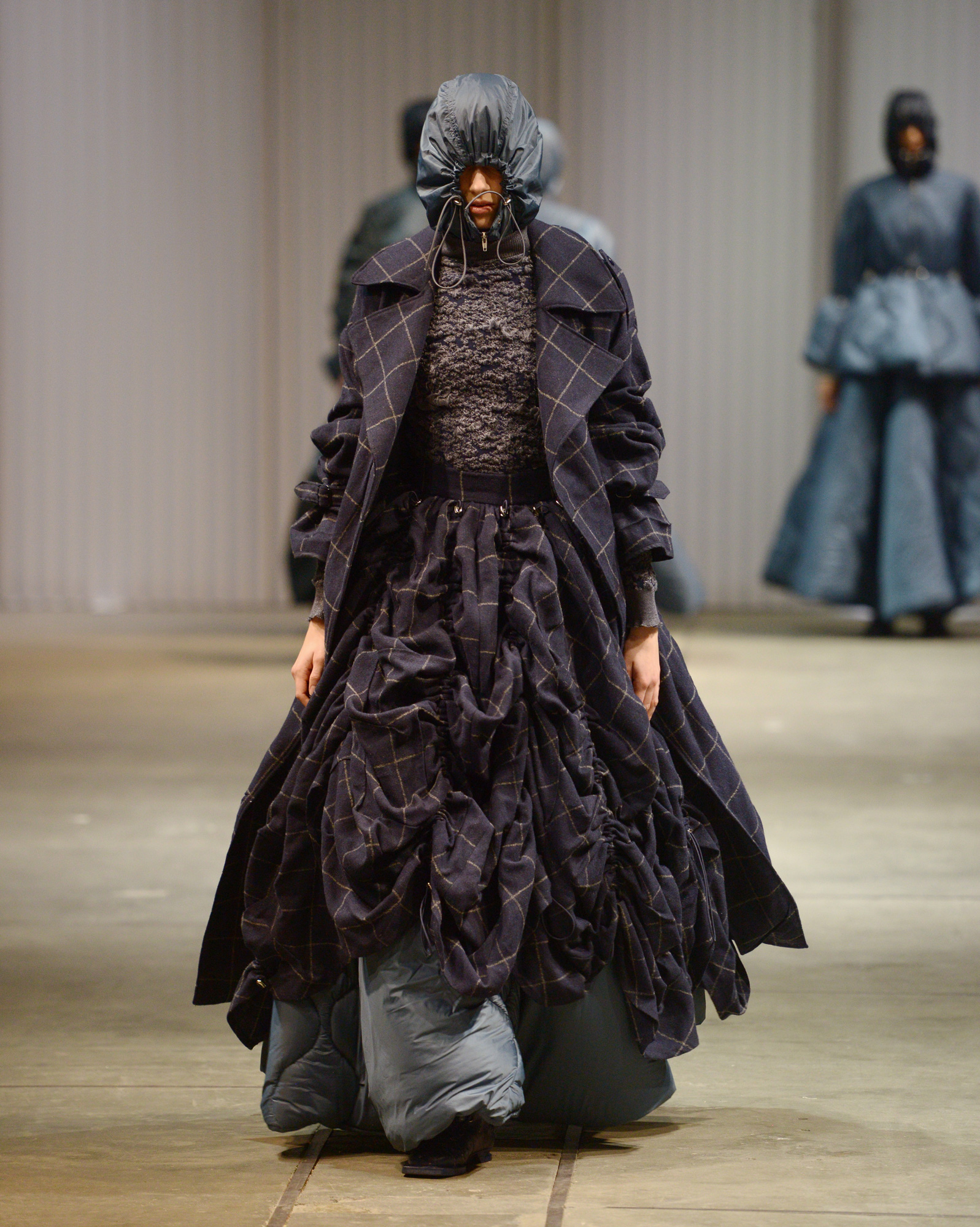
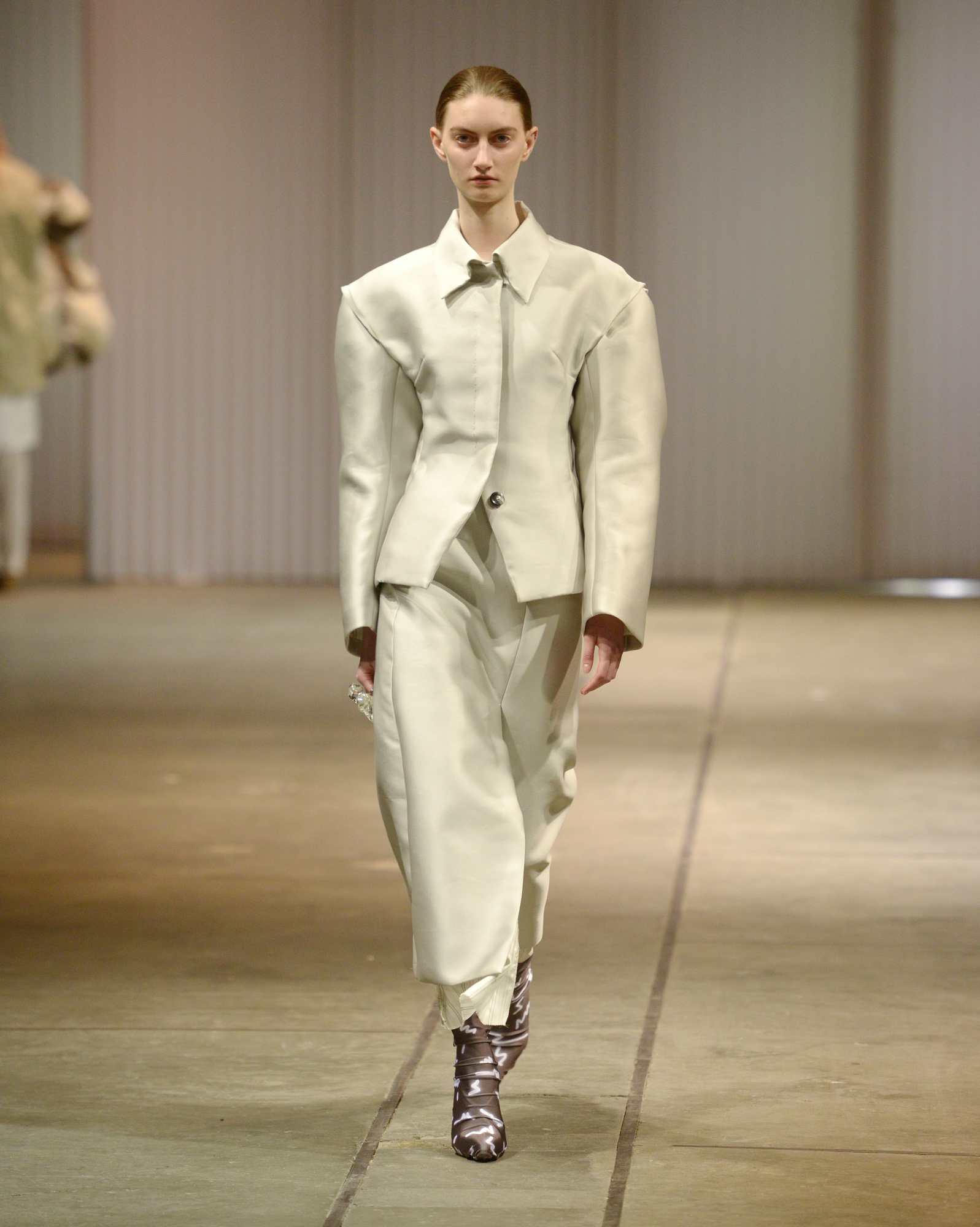
Women’s wear is taking inspiration from the stability of suiting. Shoulder pads are back. Hems are longer, and pants lengths are sweeping. I shudder to think of the effect of wearing some of these styles in a muddy Stockholm come November. Menswear is borrowing from the playfulness of womenswear. HENRIK VIBSKOV’s collection, for example, has been inspired by cake. ROBIN SÖDERHOLM’s DESIGNERS NEST collection recalls Virginia Woolf’s Orlando.
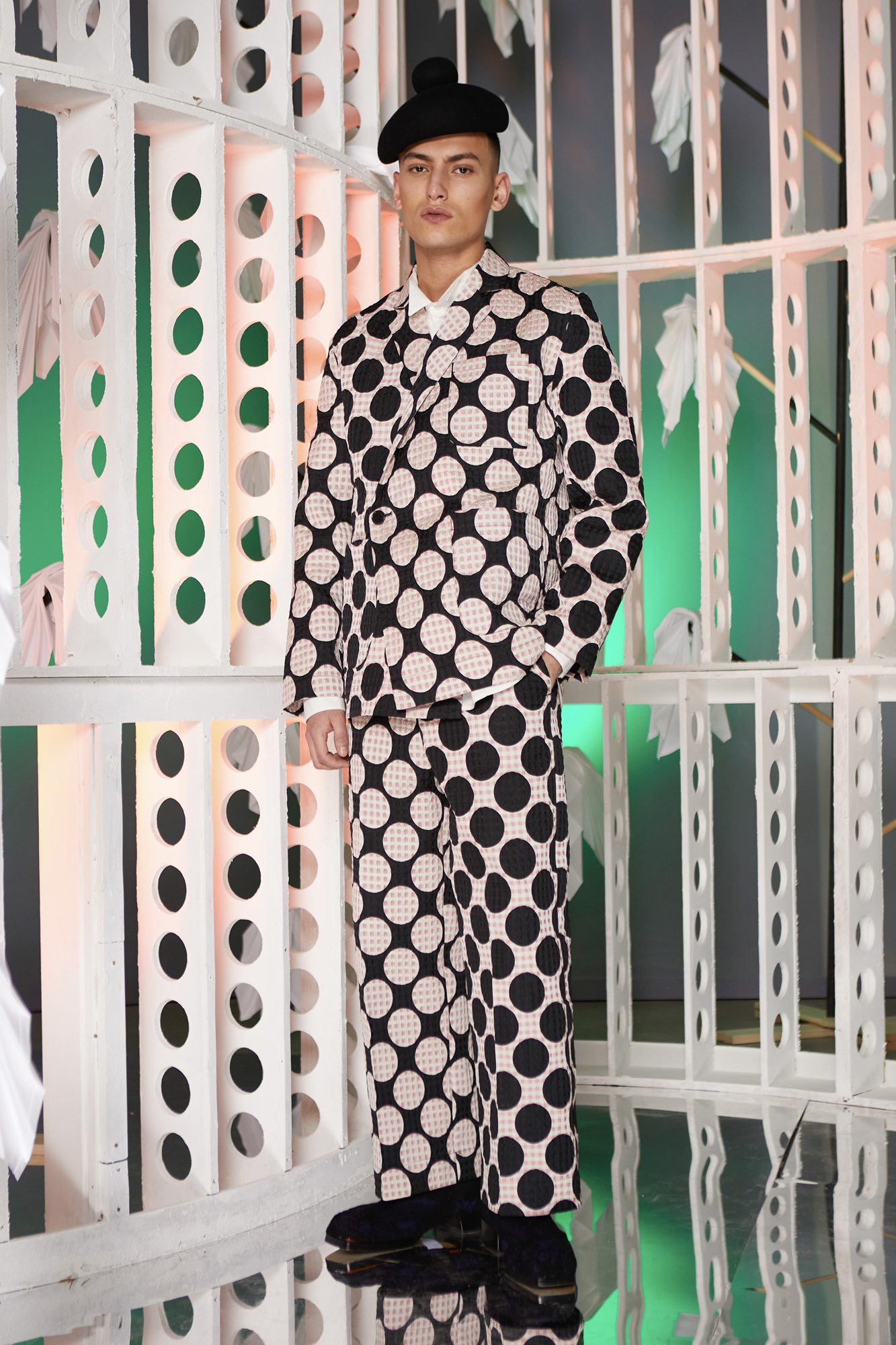
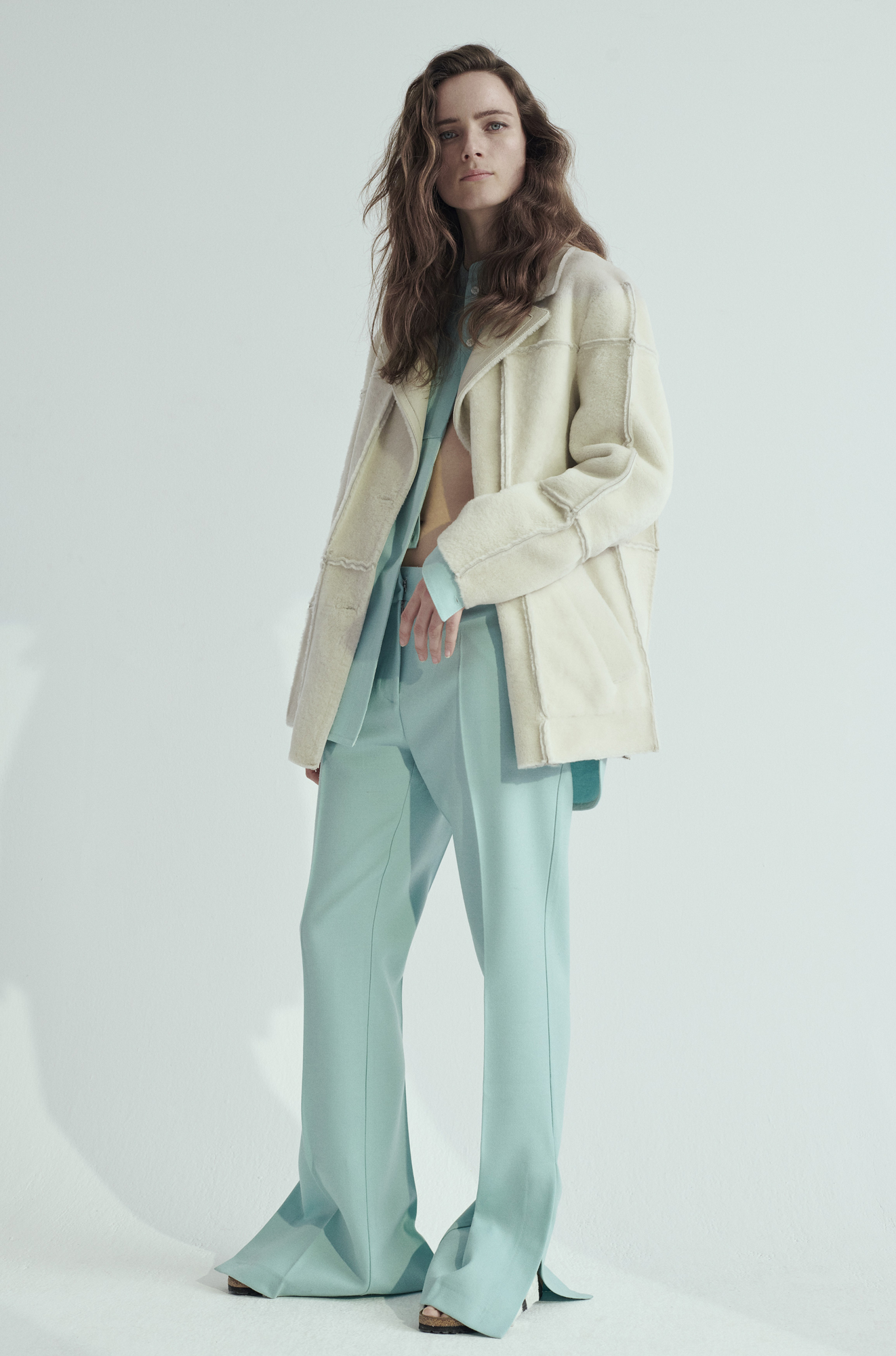

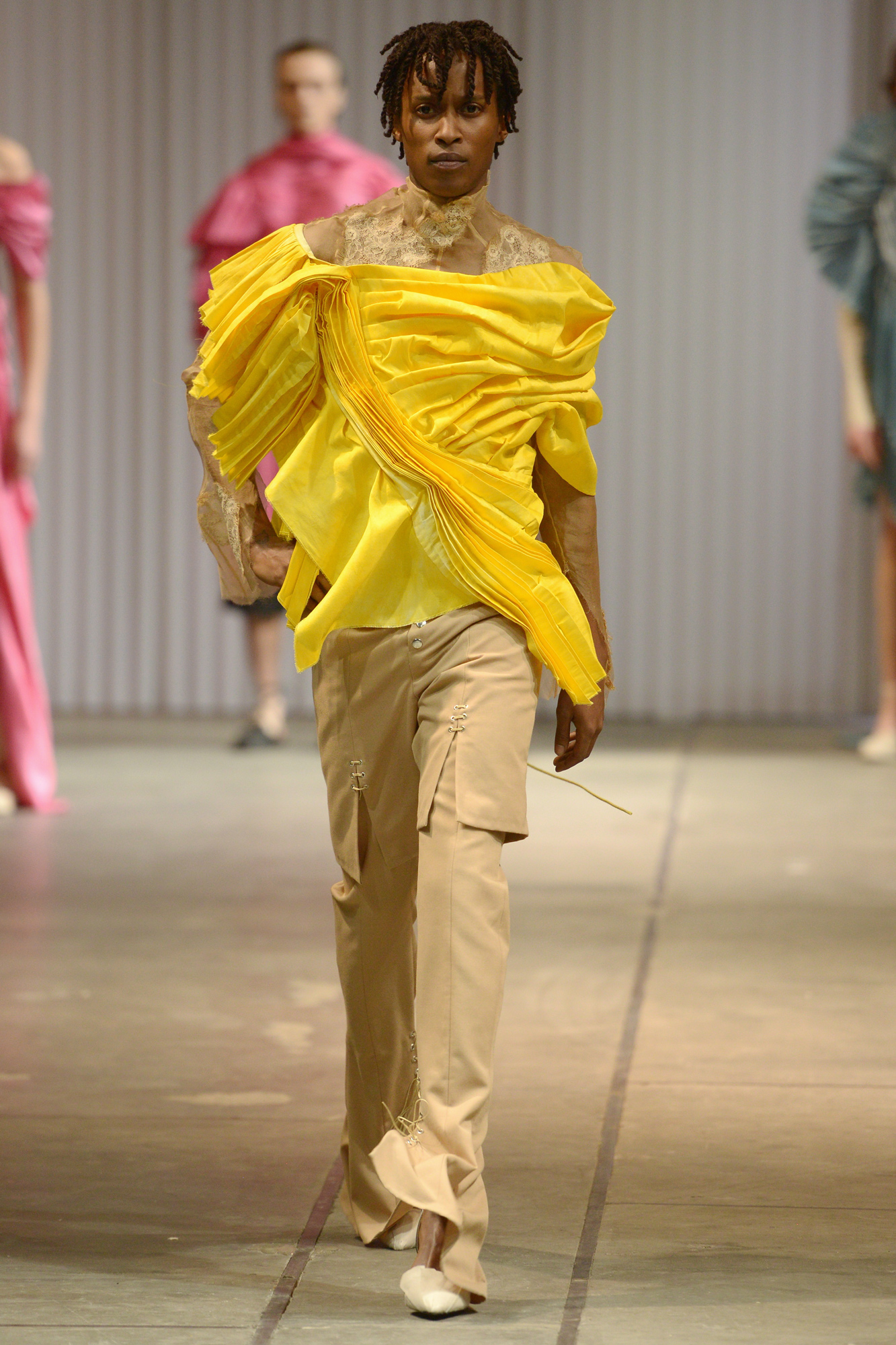
Patchwork is a minor recurring theme. Hopefully used as a way to reuse old collections and to use less fabric in pattern construction.
It is always interesting to see what the next generation of designers are doing and how changes in the cultural, physical, and business environment affect them and their creative processes. Many of the finalists in DESIGNERS NEST, an incubator of promising, future designers, have gone back to rejuvenating traditional silhouettes and exploring innovative construction techniques. My favorite is KRISTIAN DAVID’s reworking of the conventional djellaba silhouette. His “To Construct a Bridge” collection definitely addresses the multiplicity of culture. A leap forward in the visual language of fashion.
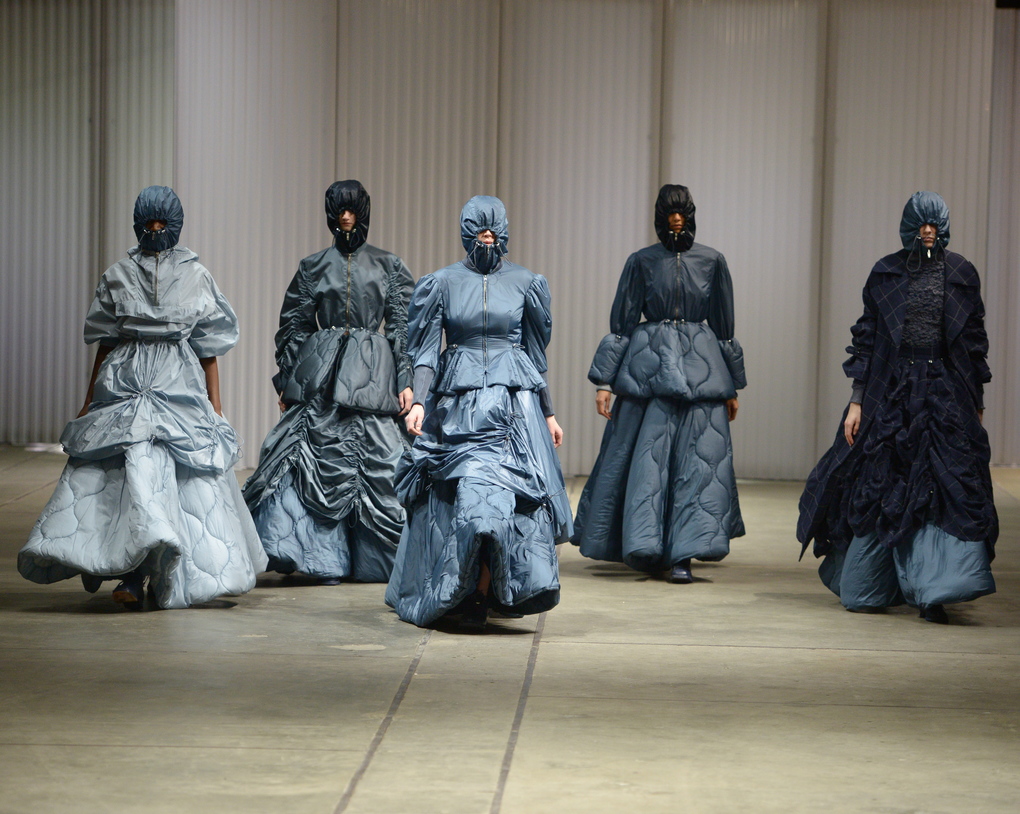
Cover photo KRISTIAN DAVID courtesy of DESIGNERS nest
All photos courtesy of COPENHAGEN FASHION WEEK.

